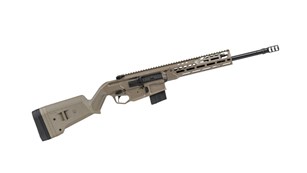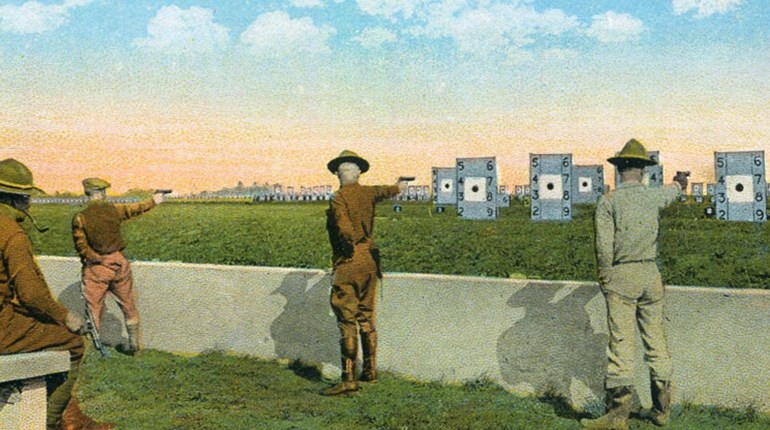
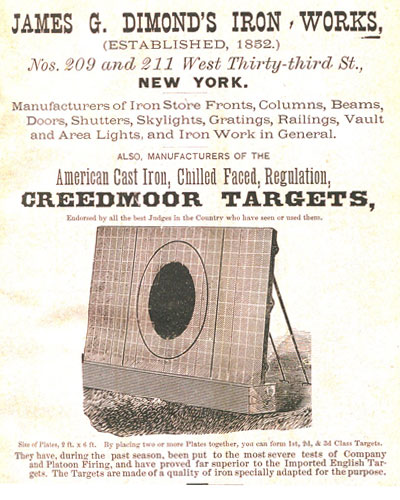
With the formation of the National Rifle Association of America in 1871, long range target shooting changed remarkably. Riflemen would assemble at the NRA Range at Creedmoor, Long Island, and launch massive .45-caliber 530 grain soft lead bullets, propelled by 90 grains of black powder at a stately 1400 feet per second, towards iron plates arranged at up to 1000 yards. Even before the smoke cleared, the clanging of the lead slug against the metal target gave a satisfying feeling to competitors on the firing line waiting for the target marker to signal the location and value of the shot.
At 200 and 300 yards they shot at the "third class" target, a six-foot by four-foot cast iron slab with an eight-inch black bullseye worth five points, four points were earned by hitting the 26-inch "center" ring. A hit inside a 46-inch circle was an "inner" or "magpie", worth three points, while any shot outside of the rings, but still on the target face, was worth two points and called an "outer."
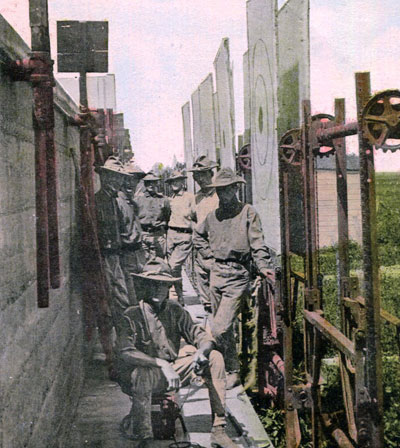
Beyond 600 yards, they aimed at a "first class" target; a six-foot tall 12-foot wide rectangle of cast iron. The 36-inch bullseye was surrounded by a 54-inch concentric "center" circle. A six-foot square surrounded the circles and formed the "inner". The "outer" was a three-foot by six-foot wing on each end.
A deep pit, from which comes our modern term for the area where targets are serviced, was dug in front of the target. In it crouched, according to A.H. Gildersleeve, one of the Gilded Age's prominent long range shots and an NRA President—an "intelligent country boy" working as a target marker. For as much as 25¢ a session, a princely sum at the time, the lad would mark the shot location and value with a paddle and then, with a brush attached to a long stick, dab a little paint over the pockmark to offer a clean target for the marksman's next shot. A simple code that was used for scoring consisted of colored discs that communicated a shot’s value.
From Iron to Paper
With the introduction of printed paper targets, the iron target faded away and the more familiar window sash target frame became popular for its practicality and economy. The Sliding, or Brinton Target, so called because it was first employed on the Brinton Rifle Range, near Elizabeth, NJ, is a familiar piece of range equipment, virtually unchanged for six generations, to military and civilian riflemen alike.
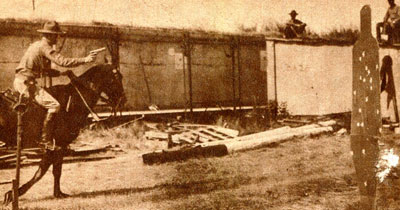
Ammunition quality of the era improved with the advent of the Model 1903 Springfield rifle. Concurrently, the Target “A”, for 200 and 300 yards, replaced the third class target with a black center, 12 inches in diameter, worth five points, a 24-inch four ring, and a 36-inch three ring. Shooters were soon racking up perfect scores and a method to break ties was required so, in 1922, a six-inch scoring ring was inserted into the target's center to solve the problem. Some classically trained soldiers, who were familiar with both the five ring target and the Latin language, recalled that five in the ancient tongue was represented by a “V” and that would be a good designation for the new ring.
At 600 yards riflemen now took aim at a 20-inch five, 37-inch four and 53-inch three ring Target "B" mounted on a six-foot square frame. The 1,000 yard Target "C" retained the same appearance as the old Class One target but with a 36-inch bullseye, 54-inch four ring, six-foot square three rectangle, with two-foot by six-foot wings worth two points.
September 2, 1958 was a watershed day in high power history when Marine Corps Technical Sergeant Michael Pietroforte shot the first possible 250X250 score on the National Match Course. The icing on the cake was that he did it in the premier High Power Match, the National Trophy Individual Match (NTI) at the National Matches. It was the first sign that the target was being overtaken by advances in firearm and ammunition technology and improved training techniques. By the early 1960s perfect scores on the 5V target at all distances, if not always in the aggregate, became a regular enough occurrence to warrant designing a more discriminating target.
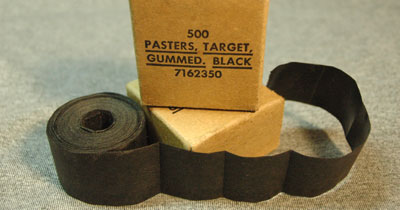
The SR target, with its six scoring rings, three-inch X through 37-inch five ring, made its first appearance in competition in 1967. As originally designed, the SR target had a 13-inch/6.5 minute MOA aiming black, X through nine ring, at 200 yards but it was also used for 300 yard rapid fire where it had a four MOA aiming black. The MR-1 target—MR stands for Mid-Range—used at 600 yards, had a 24-inch/four MOA aiming black from the X through eight ring.
In 1980, it was determined that the aiming black at 300 and 600 yards was too small. In response, the SR target's aiming black was expanded to the eight ring, creating a new target for 300 yards, the SR-3. The MR-1's black was expanded to cover the X-ring to the seven ring.
The 1,000 yard 5V target "C" eventually went the way of the "A" and "B" as a domestic competition target in 1974. It was replaced by the NRA Experimental 1,000 yard target center which debuted in the 1975 Leech and Wimbledon Matches.
The original LR target has a six-foot by six-foot buff background upon which appears a ten-inch/one MOA X-ring, a 20-inch/two MOA ten ring, a 30-inch/three MOA nine ring, and a 44-inch/4.4 MOA eight ring. All shots outside of the eight ring hitting the background paper were scored a seven. In 1979, "Experimental" was dropped from the target's nomenclature and a 60- inch/six MOA seven ring was added. Hits on the remaining target face are worth six points. The Palma Council adopted the LR target in 1992 for all future Palma competitions.
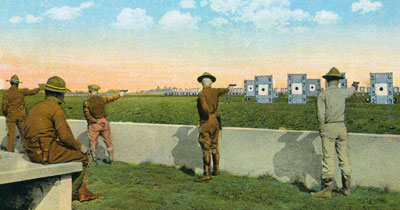
The scoring rings, originally called counting rings, for the 100 yard target, were the same in 1919 as they are today with a two-inch ten ring, called a 'carton' by the British. There was no X-ring to break ties at the time but the one-inch X circle, or "inner carton', would be introduced in 1933 by the British and would be a regular feature on U.S. targets by 1938. The 50-yard target's dimensions were exactly one half of the 100 yard target and would remain so until 1927 when the dimensions, again following the SMRC lead, were reduced by 0.11 inches, half of the diameter of a bullet, which made the targets proportional.
The X-ring of the A-21 is one inch in diameter, one MOA. However, NRA Smallbore Rule 14.3(a) states that, "A shot hole, the leaded edge of which comes in contact with the outside of the bullseye or scoring ring of a target, is giving the higher value." This means that in edge scoring, a shot scored as an X can have its center as far as 0.11 inches away from the edge of the ring. If you have two such shots, one at three o'clock and one at nine o'clock the X-ring dimension is actually 1.22 inches. This explains why the 50-yard X-ring is 0.39 inches in diameter for 0.39 inches plus 0.22 inches is 0.61 inches; one half of the 100 yard nominal X-ring diameter.
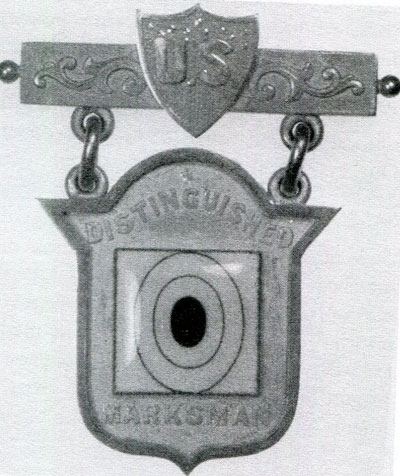
The most ubiquitous of all smallbore rifle targets is the NRA 50-foot A-17, the "Bucket Bull." There is probably not a rifle shooter in the United States who has not shot at least one match on this venerable icon of smallbore competition. Originally it was called the "50-Foot Slow-Fire" target and its dimensions have never varied, although in its early days the aiming black only extended to the 1.150-inch seven ring as opposed to the current 2.483-inch X-ring.
Prior to the familiar format of a center sighting bull surrounded by a guard ring and ten record bulls arranged in three columns, the bulls were arranged in alternating rows of three and two with no sighting bull. The A-17 also exists in two training and qualification formats as the A-1/TQ-1, which is a single bull, out to a two ring on a seven-inch by nine-inch card, and the five bull A-5/TQ-5 on the same size card.
The now obsolete A-36 "Dot" target, used in international gallery competitions for so many years, was replaced in 2006 by the USA/NRA 50, a scaled down version of the current ISSF 50-meter target containing ten record bulls. Two sighting bullseyes surrounded by a guard box with black triangles in the upper right corner of the guard box, to prevent confusion with record bulls, fill the center of the target. In the center of the bullseye is a barely visible dot representing the ten ring but the dimensions are such that edge scoring is impossible. The only accurate way to score tens is to use an outward scoring plug. The outward plug has a large flange around the 22-caliber plug and if the outer edge of the flange does not exceed the outside edge of the seven ring the shot is scored a ten.
U.S. Cavalry troops were required to shoot dismounted on the Army Target “L”. Even though they carried sabers and carbines, revolvers and pistols were the primary arms of the cavalry. Just as foretop men aloft in the rigging during the days of sail was admonished, "One hand for yourself and one for the ship," so it was with the cavalryman, one hand for the horse and one for the pistol and that is why conventional pistol shooting is a one handed affair. After qualifying on foot, troops were required to repeat the course of fire while on their horse.
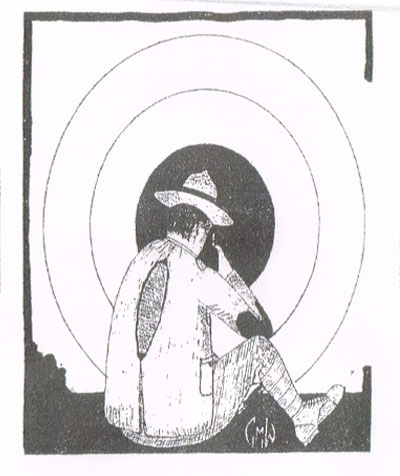
The conventional pistol is fired both outdoors, at 25 and 50 yards, and in the gallery, at 50 feet, using .22 caliber, centerfire-usually a .38-caliber pistol but the use of a .45 caliber is also quite common, and .45-caliber handguns. The pistol National Match Course (NMC) is the fundamental match from which all others are derived. The NMC features a slow fire stage-ten shots in ten minutes, followed by a timed fire stage-ten shots in two strings of five shots each in 20 seconds, and a final rapid fire stage shot like the timed fire stage but with just ten seconds for each string.
The slow fire pistol gallery target, the B-2, fired at 50 feet is a reduction of the 50-yard Standard American Target, the B-6, with a three-inch black aiming point. Fifty foot timed and rapid fire is shot on the same target, the B-3, which is slightly larger than the B-2 with the aiming black extending to the nine ring.
The 25-yard targets are all the same with the one exception being the size of the aiming black. For slow fire the B-16 has a black 5.32 inches in diameter while the timed and rapid fire B-8 has a smaller, 2.6-inch aiming black. The 50 yard Standard American Target, B-6, used for slow fire has black filling all rings through the eight. Outdoor pistol targets, like high power, also have replacement centers and can be hand printed on paper or tagboard, which is a light cardboard.
Conclusion
The evolution of targets continues to meet the needs of the competitor measuring his skills. Double Distinguished Smallbore Rifleman and noted shooting historian Paul Nordquist (see Paul’s article on Guns of the 1920s in last month’s issue ) mused that, "The target is a measuring device one used to measure the abilities of a shooter. As with all measuring devices you pick the one most suitable to the task. No matter which one you pick there is an element of arbitrariness involved."
With that in mind, and with all of what has been said about target development and evolution, there is one constant through all the years of organized competitive marksmanship in the United States. The object of the game has always been to hit the center of the circle. Dimensions of the target and aiming black, width of the rings, or the distance at which the target is engaged matters not. What is important to remember is that the target has almost always been a circle and, no matter what size the circle, the center is still the center.









